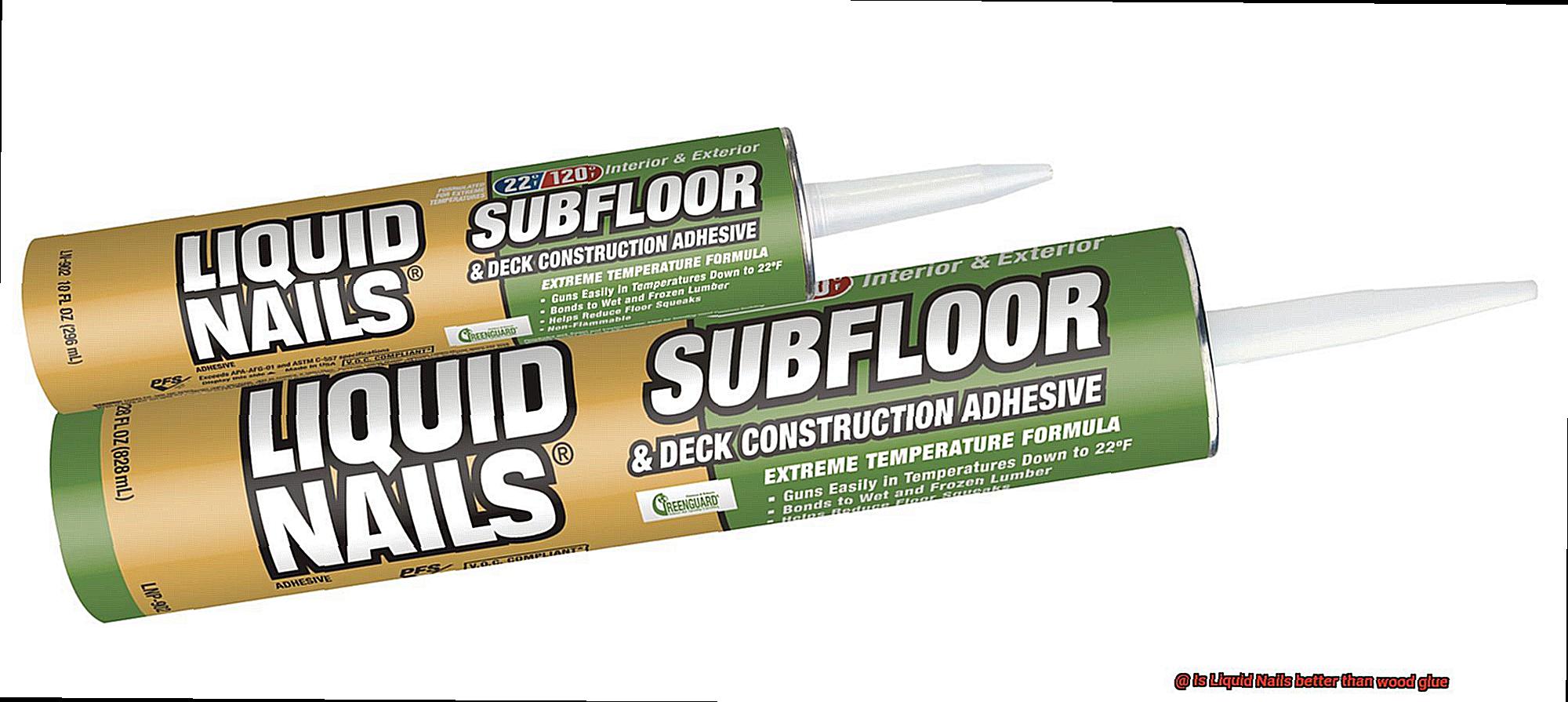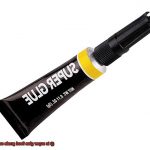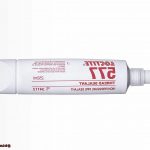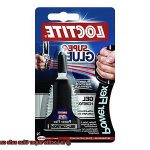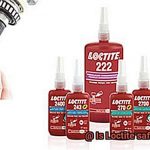Joining pieces of wood together can be a sticky situation, but fear not.
We’re here to settle the ultimate woodworking debate: is Liquid Nails better than wood glue? In this blog post, we’ll break it down for you, weighing the pros and cons of each adhesive.
It’s time to put this age-old question to rest once and for all.
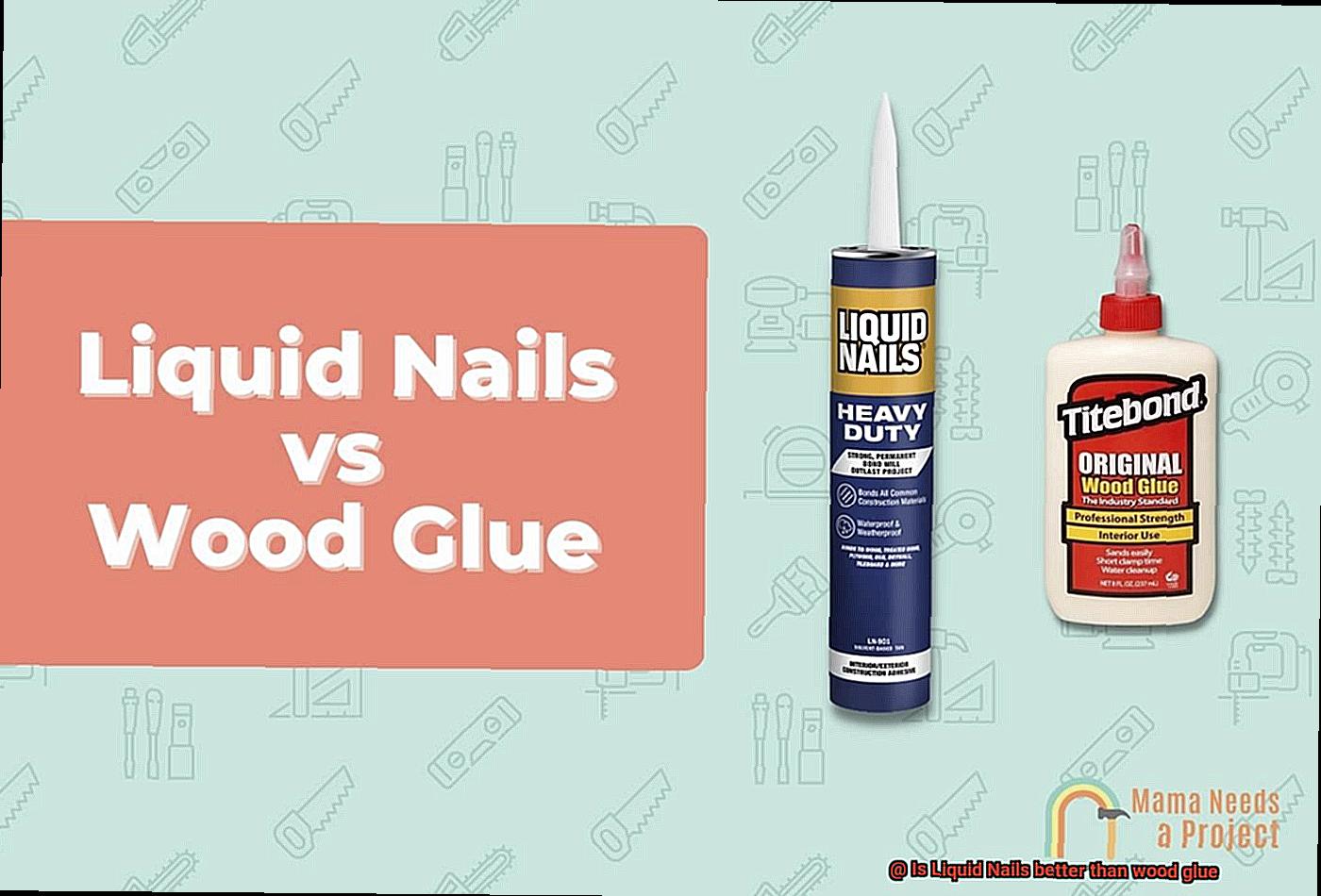
Strength Comparison
Contents
When selecting an adhesive for your projects, understanding the strengths of different options is crucial. In this article, we will compare the strengths of Liquid Nails and wood glue based on their composition, application, and specific bonding capabilities. By examining these factors, we aim to provide you with the necessary information to make an informed decision.
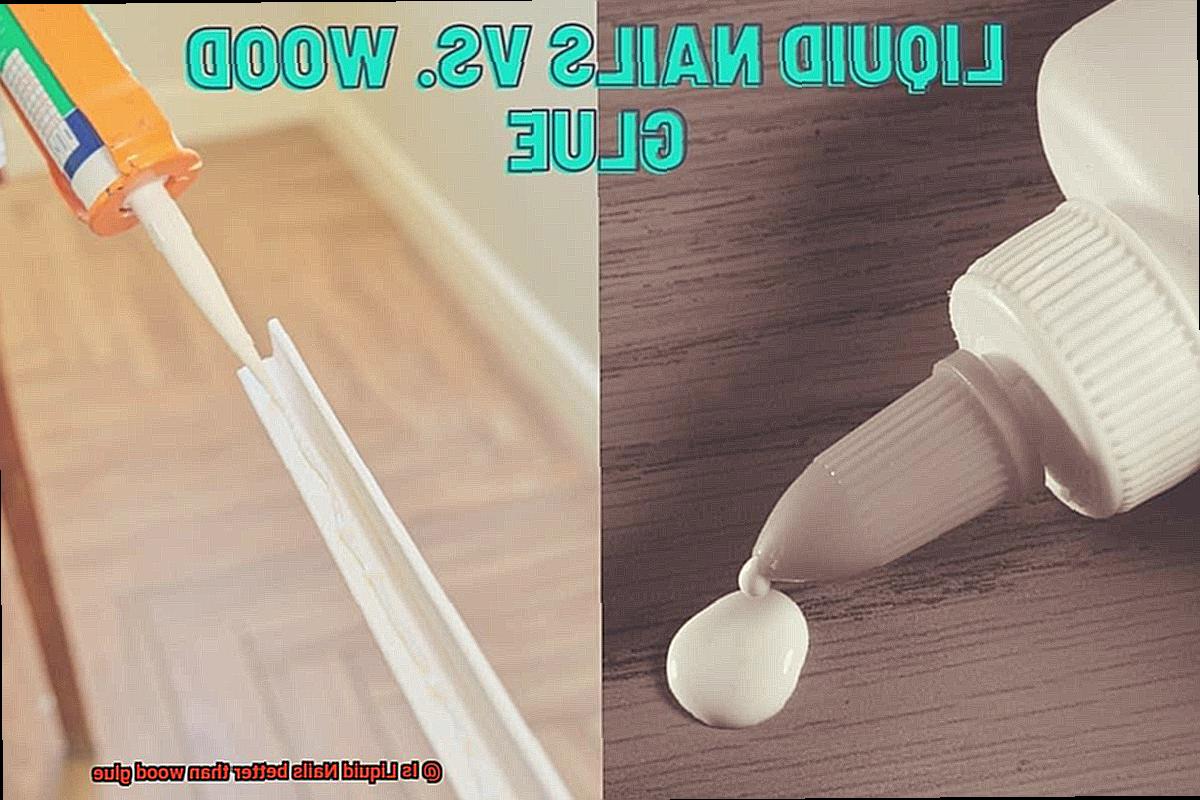
Liquid Nails: Exceptional Holding Power and Versatility
Liquid Nails is a construction adhesive that bonds various materials, including wood, metal, and concrete. Its exceptional holding power makes it a popular choice for heavy-duty construction projects. With its high-strength formulation, it creates a durable bond capable of withstanding heavy loads and resisting moisture. This versatility allows for both indoor and outdoor applications.
Wood Glue: Tailored for Wood Bonding
Wood glue, available in yellow (carpenter’s glue) and white (PVA glue), is specifically formulated for bonding wood surfaces together. It excels in creating a strong bond by penetrating wood fibers as it dries. Its excellent adhesion properties make it ideal for woodworking projects that require strength and durability.
Comparing Strength: Liquid Nails vs. Wood Glue
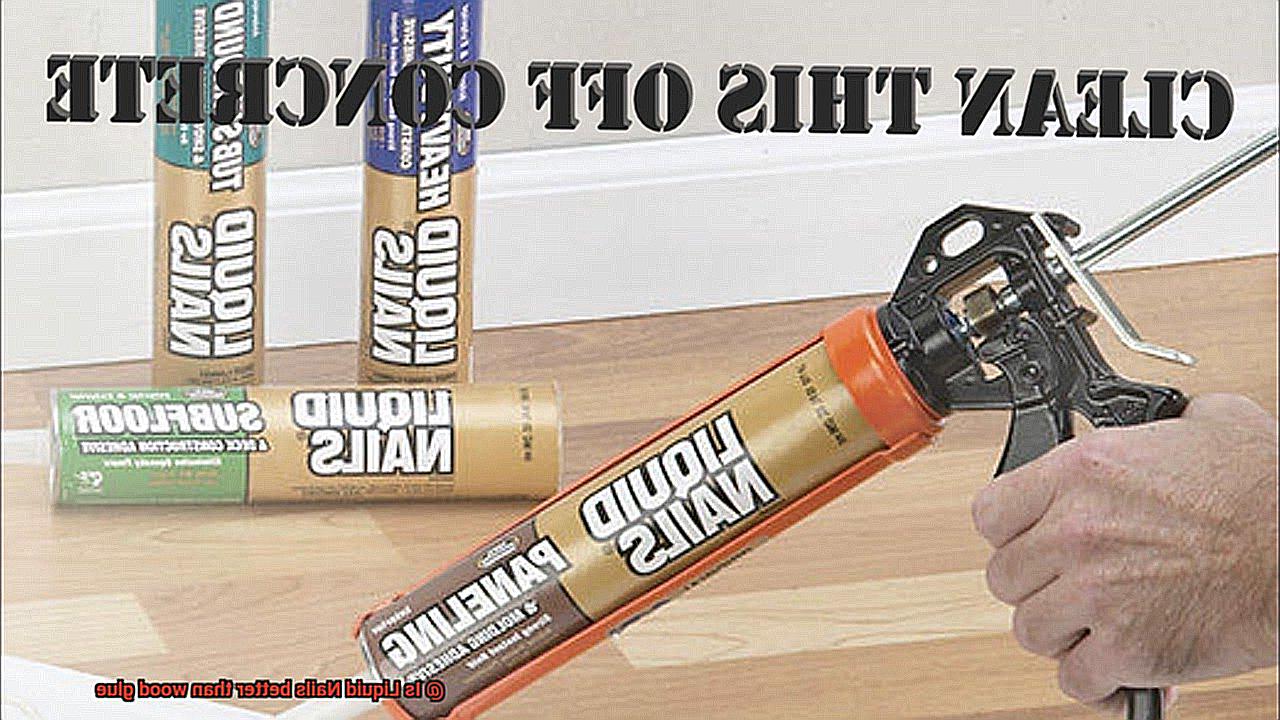
In terms of sheer strength, Liquid Nails generally has a higher bond strength compared to wood glue. Its formulation enables it to create a stronger bond between different materials, making it ideal for projects that demand maximum durability and load-bearing capacity. However, the actual strength of the bond can vary based on factors such as surface preparation, application technique, and curing time.
Considerations Beyond Strength
While Liquid Nails offers superior overall strength, it may not be as suitable for delicate woodworking projects where precision and aesthetics are paramount. In such cases, wood glue may be preferred as it provides a reliable bond without compromising the appearance of the finished product. Wood glue also has a shorter drying time and is easier to use, making it popular among DIY enthusiasts and hobbyists.
Versatility of Liquid Nails vs Wood Glue
When it comes to tackling DIY projects or construction jobs, having the right adhesive can make all the difference. Liquid Nails and wood glue are two popular options that offer their own unique versatility. Let’s explore the characteristics and strengths of each adhesive to determine which is the best fit for your project.
Liquid Nails is renowned for its ability to bond a wide range of materials, including wood, metal, and concrete. This exceptional versatility makes it an excellent choice for various projects. Whether you’re building furniture, installing trim, or working on a home renovation, Liquid Nails can provide a reliable bond between different materials. Its strong holding power ensures that your project will stay intact, regardless of the materials you’re working with.
On the other hand, wood glue specializes in bonding wood surfaces together. While it may not have the same versatility as Liquid Nails, it excels in providing a strong and durable bond specifically for woodworking projects.
Wood glue is formulated to penetrate the wood fibers, creating a bond that is both robust and long-lasting. So, if you’re working on a woodworking project like constructing a bookshelf or repairing a chair, wood glue is the adhesive of choice.
One advantage of Liquid Nails over wood glue is its ability to bond dissimilar materials. For instance, if you need to bond wood to metal or wood to concrete, Liquid Nails can handle the job with ease. Its strong adhesive properties create a reliable bond between these different materials. Conversely, wood glue may struggle to provide the same level of adhesion when used on non-wood surfaces.
Drying time is another factor to consider when choosing between Liquid Nails and wood glue. Liquid Nails typically takes longer to fully cure compared to wood glue. This extended drying time can be advantageous in some cases as it allows for more time to make adjustments or reposition materials before the adhesive sets.
On the other hand, wood glue tends to dry faster and creates a stronger bond relatively quickly.
When it comes to waterproofing and outdoor applications, Liquid Nails generally offers better resistance to moisture compared to wood glue. This makes it the preferred choice for outdoor woodworking projects or projects that may be exposed to water or humidity. However, if you’re working on fine woodworking projects where aesthetics are important, wood glue is often preferred due to its ability to dry clear and be easily sanded or stained.
Drying Time
Embarking on a DIY project requires careful consideration, especially when it comes to selecting the right adhesive. Among the numerous factors to ponder, drying time takes center stage. In this article, we delve into the captivating world of drying time for Liquid Nails and wood glue, exploring how various elements influence this critical aspect. Armed with this knowledge, you will be equipped to make an informed decision, ensuring optimal results in your creative endeavors.
Factors Affecting Drying Time:
Type and Brand:
As diverse as the adhesive market itself, different types and brands of Liquid Nails and wood glue exhibit varying drying times. Liquid Nails, with its rapid-drying prowess, completes its curing and bonding process within approximately 24 hours. Conversely, wood glue demands a little more patience, taking up to 24-48 hours, or sometimes even longer.
Temperature and Humidity:
Enter the enchanting dance between temperature and humidity—a duo capable of dictating the pace of adhesion’s transformation. In this captivating performance, higher temperatures and lower humidity levels quicken the drying process for both Liquid Nails and wood glue. Thus, working in a well-ventilated space with controlled temperature can expedite drying time, adding a touch of magic to your projects.
Materials Being Bonded:
The very essence of bonding lies within the materials themselves—a crucial factor influencing drying time. Wood glue, renowned for its generous open time, grants you ample opportunity for meticulous adjustments before setting into its final form. This characteristic proves invaluable for precision woodworking projects. In contrast, Liquid Nails bestows an initial bond of unparalleled strength due to its swift drying time—ideal for heavy or load-bearing materials that demand immediate fortification.
Manufacturer’s Instructions:
A vital compass guiding your adhesive voyage lies within the manufacturer’s instructions. Each product, with its unique formulation and intended use, presents specific recommendations regarding drying time. By carefully heeding these guidelines, you unlock the full potential of Liquid Nails and wood glue, unveiling their hidden powers.
Ease of Use
These popular options for woodworking projects each have their unique qualities that make them user-friendly in different ways.
Let’s start with Liquid Nails, the superhero of bonding. This construction adhesive comes in a convenient tube or cartridge form, ready to be dispensed with ease. Whether you prefer a caulk gun or squeezing it straight from the tube, simplicity is at your fingertips. And with its thick consistency, you have complete control over the amount you apply, ensuring it stays exactly where you want it. No slipping and sliding here.
Now, let’s switch gears and talk about wood glue, the go-to adhesive for all your wooden creations. Formulated specifically for woodworking projects, this beauty comes in a bottle and has a thinner consistency. But don’t let that fool you. Applying wood glue may require finesse as you spread it evenly on the surfaces to be bonded, ensuring a strong connection between your wooden pieces.
In terms of convenience, Liquid Nails takes the crown for certain projects. Its thick consistency allows for immediate bonding without the need for clamping in most cases. This is especially handy when working with larger or heavier pieces where clamping might be a challenge. Plus, Liquid Nails offers a longer working time compared to wood glue, giving you plenty of wiggle room to make adjustments before it sets completely.
On the flip side, wood glue may require clamping during the drying process to ensure a solid bond. This adds an extra step and can prolong your project time. However, fear not. Modern wood glues are often formulated with shorter drying times, reducing the waiting period before you can move on to the next steps of your masterpiece.
Cleanup – the not-so-fun part of any adhesive adventure. Liquid Nails can be a bit messy due to its thick consistency and strong adhesive properties. If excess adhesive squeezes out from the bonded area, you’ll need solvents or water to clean it up before it dries. On the other hand, wood glue is water-based and can be easily cleaned up with just a damp cloth if any excess glue decides to make an appearance.
Advantages of Liquid Nails over Wood Glue
Let’s dive into these advantages and see why Liquid Nails reigns supreme.
- Versatility: Unlike wood glue, which is primarily designed for woodworking projects, Liquid Nails can bond a wide range of materials. From wood to metal, concrete to ceramics, Liquid Nails can handle it all. This versatility saves you time and money by allowing you to use one adhesive for multiple applications.
- Strength and Durability: Liquid Nails boasts superior strength and durability. Its strong bond can withstand heavy loads, making it ideal for projects that require long-term stability. Additionally, it is resistant to moisture and temperature changes, ensuring that your bond remains intact even in challenging environments.
- Quick Curing Time: While wood glue requires clamping and drying time, Liquid Nails sets within minutes and reaches its full strength in just 24 hours. This means you can complete your projects faster and move on to the next task without delay.
- Specialized Formulations: Liquid Nails offers a variety of specialized formulations for different applications. Whether you’re working on heavy-duty construction projects or need an adhesive specifically designed for foam board or mirrors, there is a Liquid Nails product to suit your needs.
- Filling Gaps and Bonding Uneven Surfaces: Liquid Nails has the ability to fill gaps and bond uneven surfaces. Its thicker consistency allows it to bridge gaps and create a strong bond even on surfaces that are not perfectly aligned. This flexibility in application makes it perfect for projects where precise alignment is not possible.
- Resistance to Moisture: Liquid Nails is more resistant to moisture and humidity compared to wood glue. While wood glue may weaken or lose its bond when exposed to moisture, Liquid Nails remains strong and reliable even in humid or wet conditions. This makes it an excellent choice for outdoor applications or areas prone to moisture, such as bathrooms and kitchens.
Disadvantages of Liquid Nails Compared to Wood Glue
When it comes to adhesives, Liquid Nails has gained a reputation for its versatility and strength. However, it’s essential to consider the disadvantages of this adhesive compared to wood glue. In this article, we will explore the drawbacks of Liquid Nails and why wood glue may be a better choice for certain woodworking projects.
Drying Time:
One significant drawback of Liquid Nails is its extended drying time compared to wood glue. While wood glue typically dries within a few hours, Liquid Nails may take up to 24 hours or more to fully dry and bond materials together. This can be frustrating for time-sensitive projects or when you need to proceed quickly to the next step.
Bond Strength:
Wood glue creates a strong bond by penetrating the wood fibers, resulting in a tight grip. In contrast, Liquid Nails relies solely on its adhesive properties to create a bond. While it can securely hold lightweight items, it may not be as effective for heavy-duty applications or joining larger pieces of wood together. Wood glue’s bond is generally considered stronger and more reliable for woodworking projects.
Disassembly Difficulty:
Unlike wood glue that allows for disassembly by applying heat or moisture, removing Liquid Nails can be challenging once it has dried and cured. It may require the use of solvents or mechanical methods, which can damage the wood surface or leave behind residue that needs thorough cleaning.
Limited Shelf Life:
Wood glue typically has a longer shelf life compared to Liquid Nails, especially once the tube or container has been opened. It is crucial to check the expiration date and use the product before it becomes ineffective. Properly sealed wood glue can often be stored for extended periods without losing its effectiveness.
Odor and Toxicity:
Liquid Nails can have a strong odor during application and drying, which can be unpleasant, especially in enclosed spaces. Additionally, some variants may contain volatile organic compounds (VOCs) or other potentially harmful chemicals. It is essential to follow safety guidelines and use adequate ventilation when working with adhesives like Liquid Nails.
hukFoQ4GIk8″ >
Also Read: Will liquid nails adhere wood to concrete? – Glue Things
Conclusion
In conclusion, the debate of whether Liquid Nails reigns supreme over wood glue boils down to one thing: your project’s unique demands. Each adhesive has its own set of advantages and disadvantages, so it’s crucial to weigh these factors before settling on a winner.
Liquid Nails flexes its muscles in terms of sheer power and adaptability. Its exceptional grip and ability to bond different materials make it a force to be reckoned with in heavy-duty construction projects. It can handle hefty loads and shrug off moisture, making it an excellent choice for both indoor and outdoor applications. Moreover, Liquid Nails possesses the remarkable ability to unite dissimilar materials like wood and metal or wood and concrete.
On the flip side, wood glue is tailor-made for joining wooden surfaces together. As it dries, it seeps into the fibers of the wood, creating a robust and long-lasting bond that’s perfect for woodworking ventures. Wood glue also boasts a shorter drying time compared to Liquid Nails, making it a go-to option for DIY enthusiasts and hobbyists who crave efficiency.
While Liquid Nails undoubtedly outshines its counterpart in overall strength, it may not be as suitable for delicate woodworking projects where precision and aesthetics reign supreme. In such instances, wood glue takes center stage as it delivers an unwavering bond without compromising the final product’s appearance.
Ultimately, selecting between Liquid Nails and wood glue hinges on your specific project requirements.

